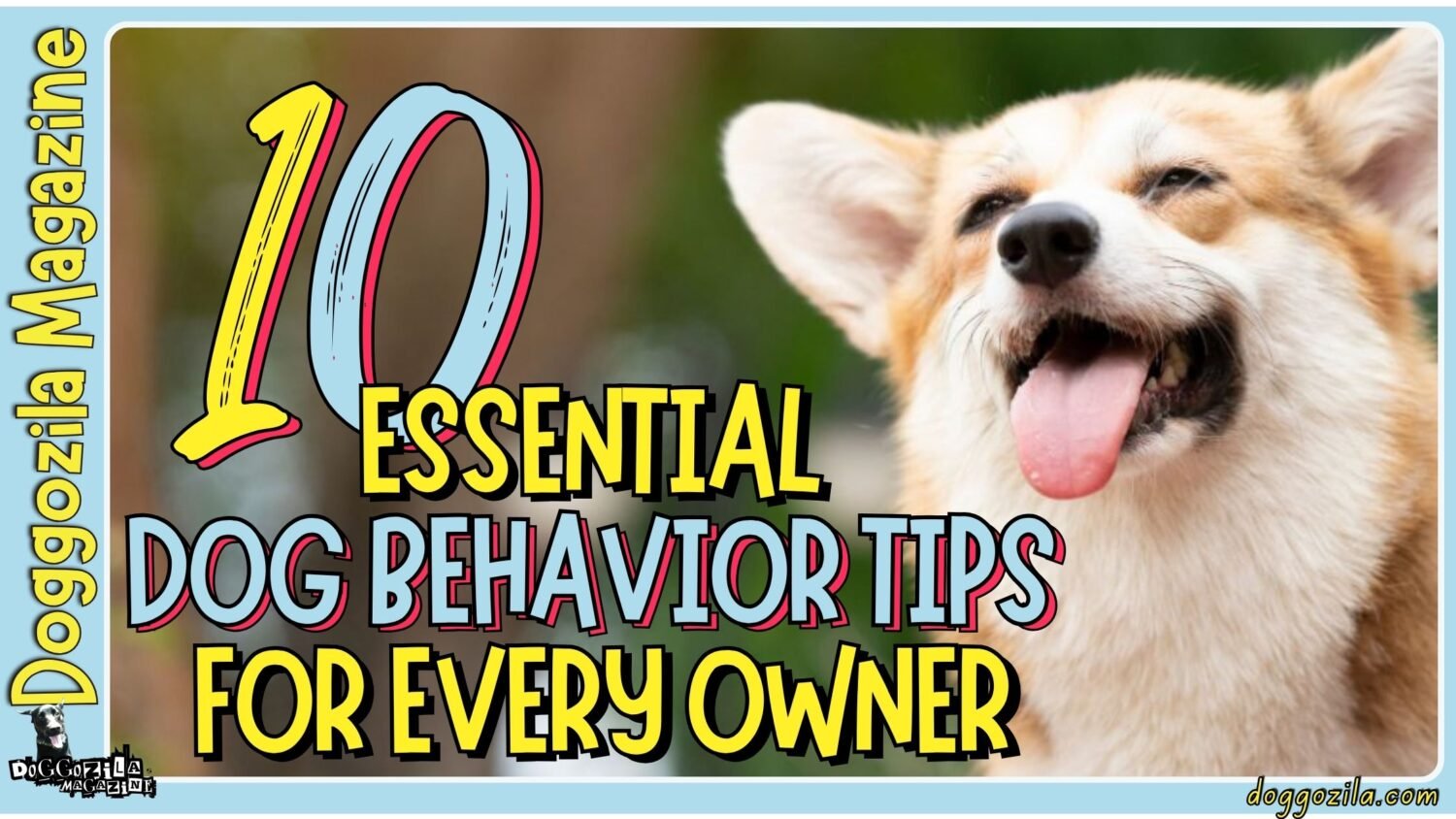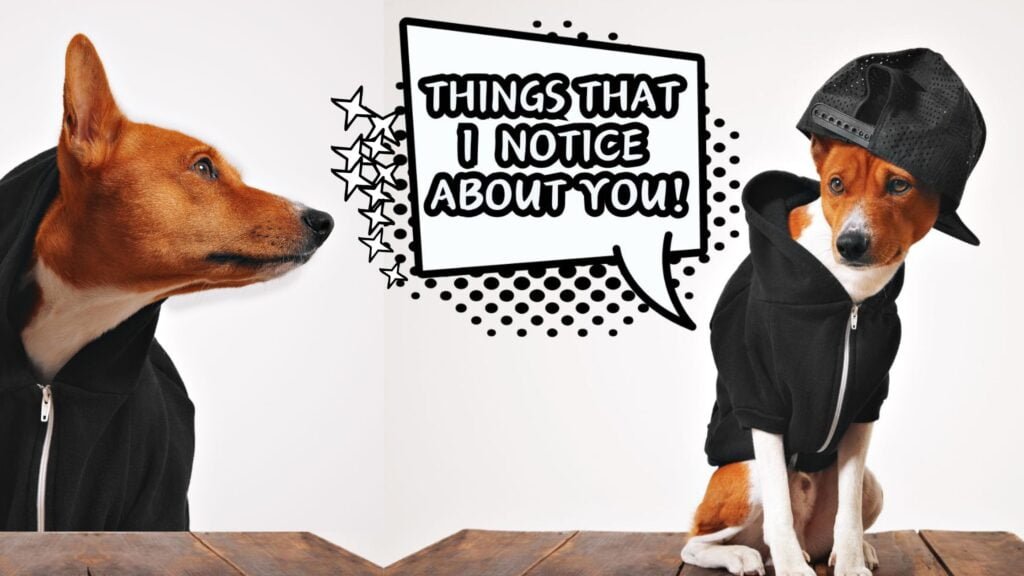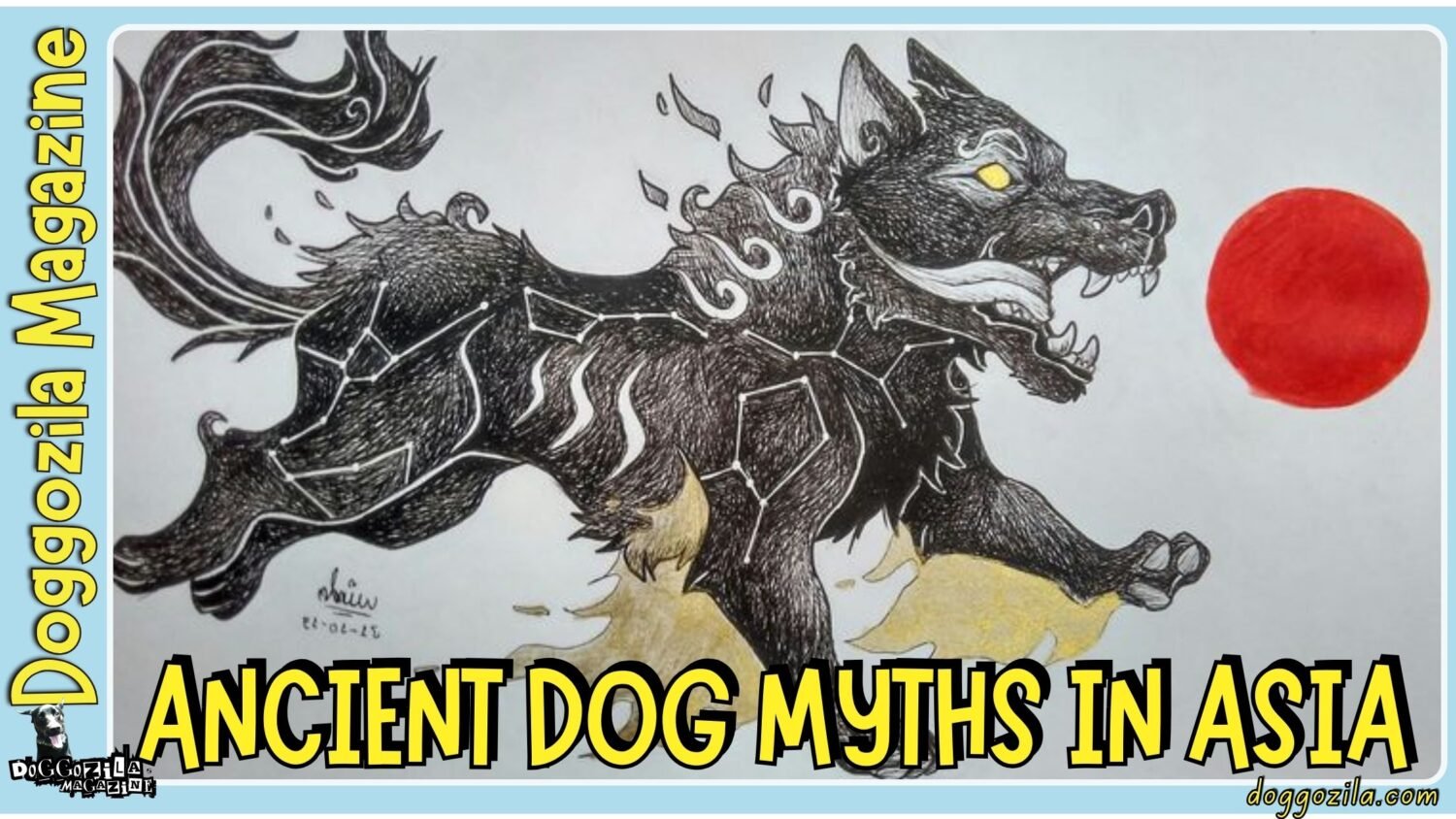Is your furry friend sending signals that they’re not quite comfortable around other pups? Deciphering your dog’s social cues is crucial for fostering positive interactions and a happier, more sociable companion. In this insightful guide, we’ll unveil the subtle signs of discomfort in dogs, expertly crafted to help you navigate your dog’s emotional world with ease and expertise. All dog owners should know the signs when their dogs don’t like other dogs!
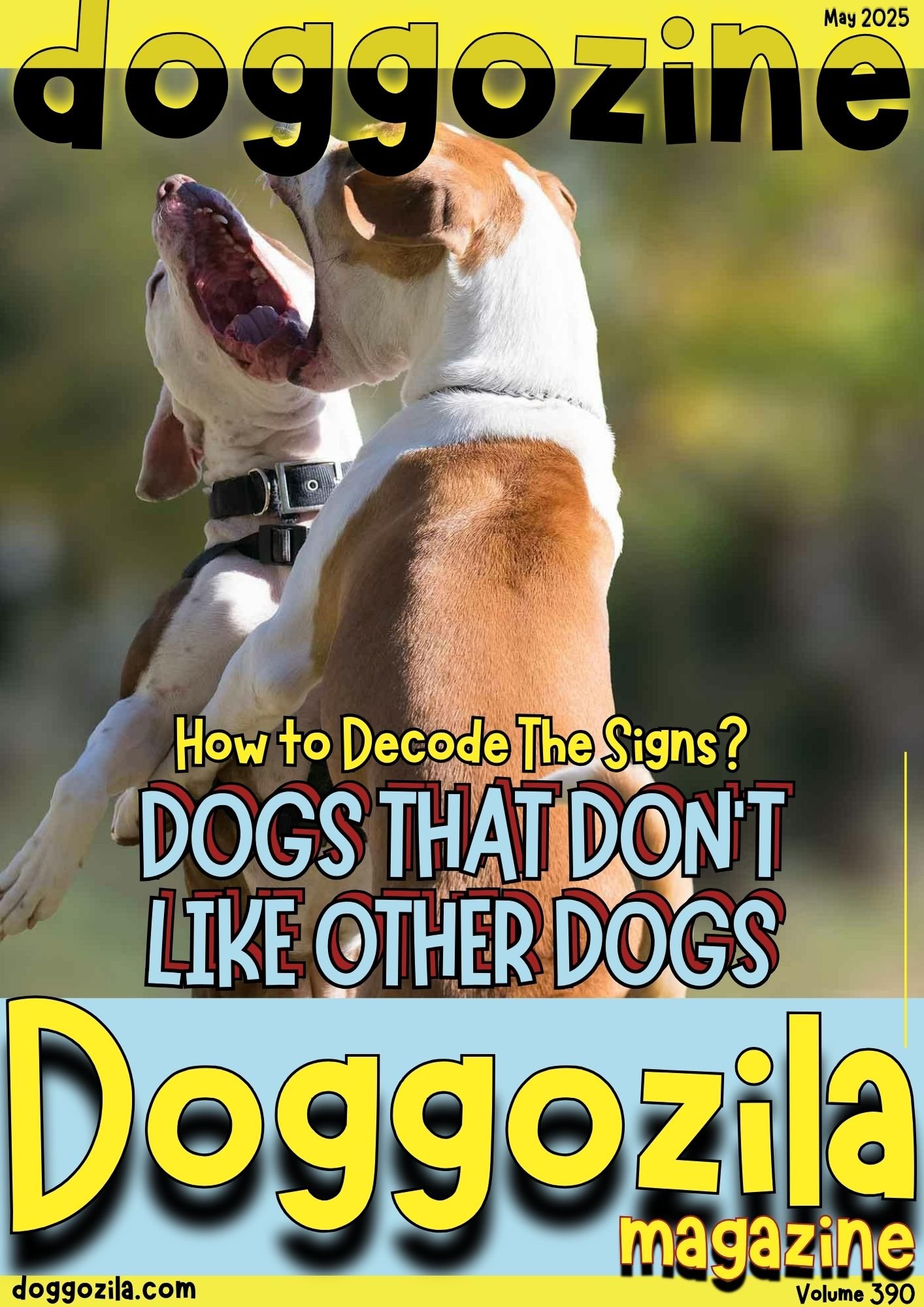
THE ART OF READING YOUR DOG’S SIGNALS
From decoding body language to understanding tail wagging variations, we’ll explore the intricate ways your canine communicates their feelings. Seasoned advice on socializing dogs who may not be fans of other pups will arm you with the tools to nurture a harmonious relationship.
Let’s embark on a journey of understanding, where expert insights and practical tips converge to empower you as a pet parent. Discover the art of reading your dog’s signals before it’s too late, and embrace your canine companion’s social nature with confidence and compassion. Are you ready to decode the nuances of your dog’s social interactions? Let’s dive in.
Signs Of Discomfort In Dogs: Recognizing When They Don’t Like Other Dogs
Dog body language speaks volumes about their emotional state. If your furry friend is showing signs of aggression or discomfort around other dogs, it’s crucial to pay attention.
A relaxed dog will have a neutral position, with a soft, wagging tail and a loose, open mouth. On the other hand, a dog that’s uncomfortable may display a stiff posture, a hard stare, or a low, continuous dog growl.
Other signs of discomfort include raising their hackles, flattening their ears, or tucking their tail between their legs. By learning to recognize these subtle cues, you can intervene before a situation escalates and help your dog feel more at ease.
Remember, every dog is unique, and their body language may vary. Some dogs, like German Shepherds, may have a more aloof or guarded demeanor, which can be mistaken for aggression. It’s essential to consider your dog’s individual personality and breed characteristics when interpreting their behavior.
🔑 Key Points: Understanding your dog’s body language is key to recognizing signs of discomfort around other canines and promoting positive interactions.
Understanding the Wag: Not All Tail Movements Are Happy Ones
A wagging tail is often associated with a happy, friendly dog, but did you know that not all tail wags convey the same message?
The position of your dog’s tail and the direction of the wag can provide valuable insights into their emotional state. A high, stiff wag may indicate arousal or aggression, while a low, slow wag may signify uncertainty or submission.
Pay attention to the speed and intensity of the wag as well. An enthusiastic, broad wag usually indicates excitement, while a small, rapid wag may suggest nervousness or apprehension.
Context is also crucial when interpreting tail wags. A dog wagging their tail while growling or displaying other signs of discomfort is likely not expressing happiness or friendliness.
🔑 Key Points: Tail wags can convey a range of emotions, so it’s essential to consider the position, direction, and context of the wag to understand your dog’s emotional state.
The Eyes Have It: Deciphering Hard Stares Vs. Soft Eyes
Eye contact is another powerful form of communication in the dog world. A soft, relaxed gaze often indicates a friendly, approachable dog, while a hard, unblinking stare can be a sign of aggression or dominance.
When a dog locks eyes with another dog and refuses to look away, it’s often a challenge or a warning. This type of stare, accompanied by a stiff body posture and other aggressive signals, should be taken seriously.
On the other hand, a dog with soft, squinty eyes and a relaxed facial expression is likely feeling content and unthreatened. They may even look away or blink frequently to show that they mean no harm.
It’s important to consider the dog’s whole body language when interpreting their eye contact. A hard stare combined with a wagging tail may indicate excitement or arousal rather than aggression.
🔑 Key Points: Soft eyes and a relaxed gaze usually signify a friendly dog, while a hard, unblinking stare can be a warning sign of aggression or dominance.
Posture Tells a Story: The Tale of the Body Language
A dog’s body posture can speak volumes about their emotional state and intentions. A relaxed, neutral position with a loose, wiggly body usually indicates a happy, friendly dog.
On the other hand, a stiff, tense posture with a raised head and neck can be a sign of aggression or dominance. A dog that’s leaning forward with their weight on their front legs may be preparing to lunge or attack.
One of the most misunderstood dog postures is the “play bow.” This is when a dog lowers their front end to the ground while keeping their hind end in the air. Many people assume this is always an invitation to play, but it can also be a sign of appeasement or a way to defuse tension.
Other common postures to watch for include a lowered head and body, which may indicate fear or submission, and a raised paw, which can be a sign of uncertainty or stress in dogs.
🔑 Key Points: Observing a dog’s body posture can provide valuable insights into their emotional state and help you predict their behavior in social situations.
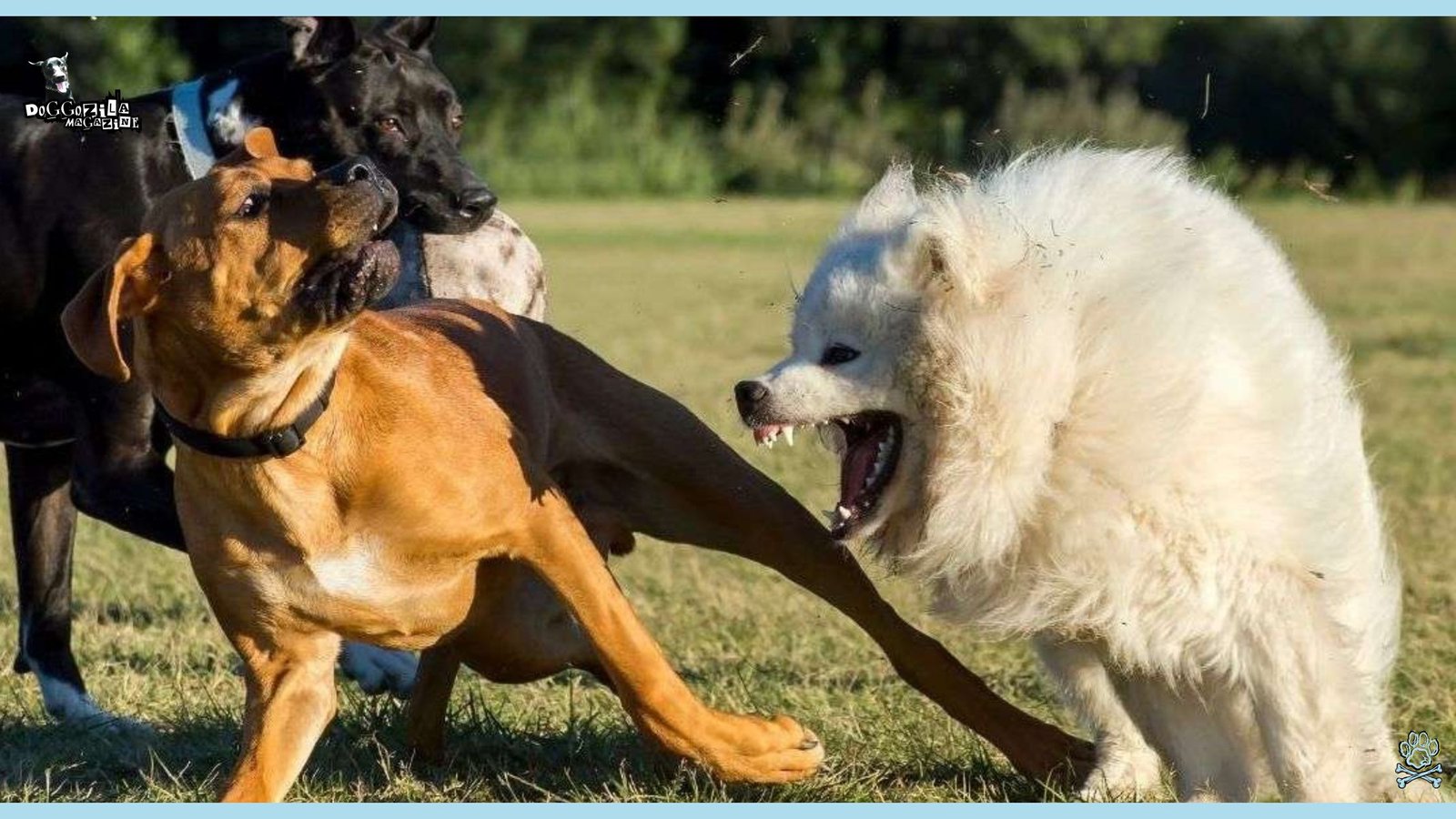
EXPERT ADVICE ON SOCIALIZING DOGS WHO DON’T LIKE OTHER DOGS
Socializing a dog who doesn’t enjoy the company of other canines can be a challenging but rewarding process. The key is to take things slow and prioritize your dog’s comfort and safety.
When Dogs Don’t Like Other Dogs Always Start Slowly and Never Force It
Start by introducing your dog to calm, friendly dogs in a controlled environment. Keep the interactions brief and positive, using plenty of treats and praise to reinforce good behavior.
If your dog shows signs of fear or aggression, don’t force the interaction. Instead, give them space and allow them to approach at their own pace. Reward them for any positive social behavior, no matter how small.
It’s also important to consider your dog’s individual personality and breed characteristics. Some dogs, like German Shepherds, may have a natural tendency to be aloof or protective, which can make socialization more challenging.
In these cases, it may be helpful to seek the guidance of a professional dog trainer or behaviorist. They can provide tailored strategies for socialization and help you identify and address any underlying issues.
🔑 Key Points: Socializing a dog who dislikes other dogs requires patience, positive reinforcement, and a deep understanding of their individual needs and boundaries.
Tips to Encourage Positive Interactions Between Dogs
One of the best ways to encourage positive interactions between dogs is to look for signs of friendly body language and behavior.
A relaxed, wiggly dog with a soft, open mouth is usually a good candidate for socialization. They may approach other dogs with a loose, bouncy gait and a wagging tail.
Another positive sign is the “play bow,” where a dog lowers their front end to the ground while keeping their hind end in the air. This is often an open invitation to play and can help defuse tension between dogs.
During playtime, look for reciprocal behavior, such as chasing, wrestling, and playful nipping. As long as both dogs are engaging in these behaviors equally and taking turns, it’s usually a sign of a positive interaction.
If one dog appears uncomfortable or overwhelmed, it’s important to intervene and give them a break. Encourage the more energetic dog to calm down and give the other dog some space.
🔑 Key Points: Recognizing and reinforcing friendly dog behavior is key to promoting positive interactions and preventing conflicts between canines.
The Role of the Owner: How Pet Parents Can Help Dogs That Don’t Like Other Dogs
As a pet parent, you play a crucial role in shaping your dog’s social behavior and helping them feel comfortable around other canines.
One of the most important things you can do is to stay calm and positive during social interactions. Dogs are highly attuned to their owners’ emotions and may pick up on any anxiety or tension you’re feeling.
If you’re nervous or uncertain about a given situation, it’s okay to remove your dog and try again later. It’s better to be on the side of caution than to risk a negative experience that could set back your dog’s socialization progress.
It’s also important to advocate for your dog and set appropriate boundaries with other owners. If another dog is being too rough or persistent, don’t be afraid to speak up and ask their owner to intervene.
Finally, remember that socialization is an ongoing process. Even if your dog has had positive experiences in the past, it’s important to continue exposing them to new dogs and situations throughout their life.
🔑 Key Points: As a pet parent, staying calm, setting boundaries, and continuously exposing your dog to positive social experiences are key to helping them feel comfortable around other canines.

RECOGNIZING AND ADDRESSING SIGNS OF FEAR AND AGGRESSION IN DOGS THAT DON’T LIKE OTHER DOGS
While it’s important to encourage positive social interactions, it’s equally crucial to recognize and address signs of fear and aggression in your dog. Common signs of fear include cowering, trembling, tucking the tail, and avoiding eye contact. A fearful dog may also show signs of aggression, such as growling, snapping, or lunging, if they feel cornered or threatened.
Distract Your Dogs from The Moment With The Other Dogs That They Don’t Like
If your dog is displaying these behaviors, the first step is to remove them from the situation and give them a safe, quiet space to calm down. Avoid punishing or scolding them, as this can increase their anxiety and aggression.
Once your dog is calm, it’s important to identify and address the underlying cause of their fear or aggression. This may involve working with a professional trainer or behaviorist to develop a tailored behavior modification plan.
In some cases, fear and aggression may be rooted in past trauma, lack of socialization, or underlying medical issues. Addressing these factors through positive reinforcement training, gradual exposure, and veterinary care can help reduce your dog’s anxiety and improve their social skills.
🔑 Key Points: Recognizing and addressing signs of fear and aggression through positive reinforcement, professional guidance, and tailored behavior modification plans is essential for improving your dog’s social skills and emotional well-being.
The Importance of Breed and History in Dog Socialization
When it comes to dog socialization, it’s important to consider your dog’s breed characteristics and individual history. Certain breeds, such as German Shepherds, were originally bred for guarding and protection work. This means they may have a natural tendency to be aloof or suspicious of strangers, including other dogs.
Understanding your dog’s breed traits can help you tailor your socialization approach and set realistic expectations. For example, a German Shepherd may never be a social butterfly, but with proper training and exposure, they can learn to tolerate and even enjoy the company of other dogs.
It’s also crucial to consider your dog’s individual history. A dog who was not properly socialized as a puppy or who has had negative experiences with other dogs may require more patience and specialized training to overcome their fears. On the other hand, a dog who has had plenty of positive social experiences from a young age may be more naturally outgoing and confident around other canines.
🔑 Key Points: Recognizing your dog’s breed traits and individual history is key to developing a tailored socialization plan and setting realistic expectations for their social behavior.
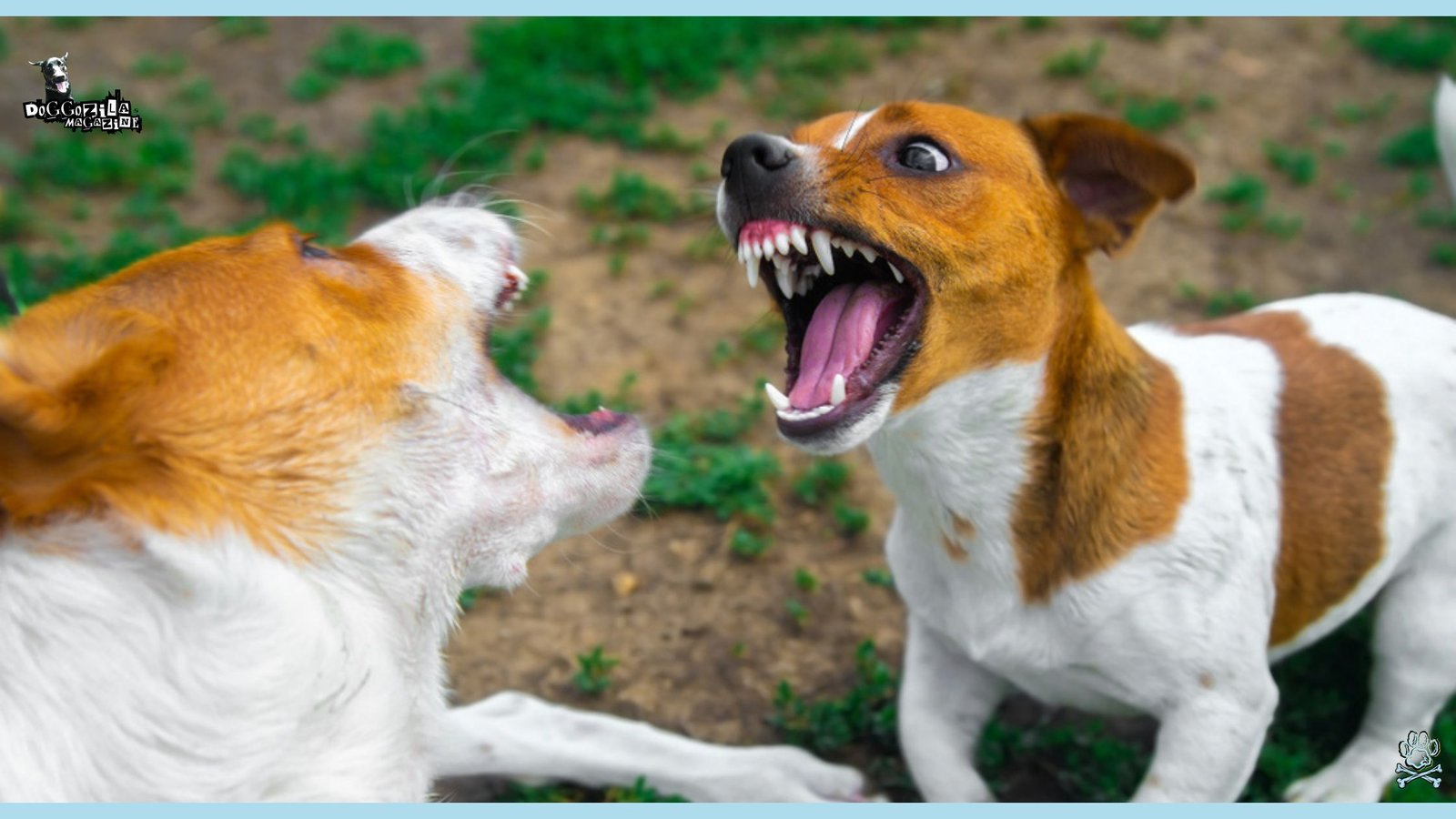
COMMUNICATION OF DOGS: BEYOND THE SPOKEN LANGUAGE THAT OTHER DOGS DON’T LIKE TO GO
While we may not be able to have a full-on conversation with our dogs, they are still highly skilled communicators in their own right.
Fun Fact: “The Secret Language Mismatch” – Some dog-reactive dogs actually misread playful cues (like a wagging tail or bow) as threats. It’s not always aggression—they might just be socially awkward, like a person who mistakes a friendly high-five for an incoming slap!
Look For The Subtle Signs Of Stress In Your Dogs
A lot of canine communication happens through body language, vocalizations, and even scent. By learning to interpret these signals, we can better understand our dogs’ emotional states and social needs.
For example, a dog who is feeling nervous or uncomfortable may yawn, lick their lips, or turn their head away. These are often subtle signs of stress that can be easily missed if you’re not attuned to your dog’s body language.
On the other hand, a dog who is feeling playful and energetic may display the “play bow” posture, bark excitedly, or even bring you a toy as an invitation to engage.
By paying attention to these canine social cues and responding appropriately, you can strengthen your bond with your dog and help them feel more confident and secure in social situations.
🔑 Key Points: Understanding and responding to your dog’s unique communication style through body language, vocalizations, and scent is key to promoting positive social interactions and emotional well-being.
Creating A Safe And Comfortable Environment For Your Furry Friend
One of the most important aspects of helping your dog feel comfortable around other canines is creating a safe and positive environment for socialization.
This means choosing calm, controlled settings for introductions, such as a fenced yard or a quiet park. Avoid busy, high-traffic areas where your dog may feel overwhelmed or threatened.
It’s also important to match your dog with appropriate playmates. Look for dogs who are similar in size, age, and play style to minimize the risk of conflicts or injuries.
Never Force Your Dogs To Interact with Other Dogs That They Don’t Like
During social interactions, provide plenty of positive reinforcement in the form of treats, praise, and toys. This will help your dog associate other dogs with good things and build their confidence.
If your dog shows signs of stress or discomfort, give them a break and let them retreat to a safe space. Never force your dog to interact if they are not willing, as this can lead to fear, aggression, and a breakdown in trust.
🔑 Key Points: Creating a safe, controlled environment with appropriate playmates and positive reinforcement is essential for helping your dog feel comfortable and confident around other canines.
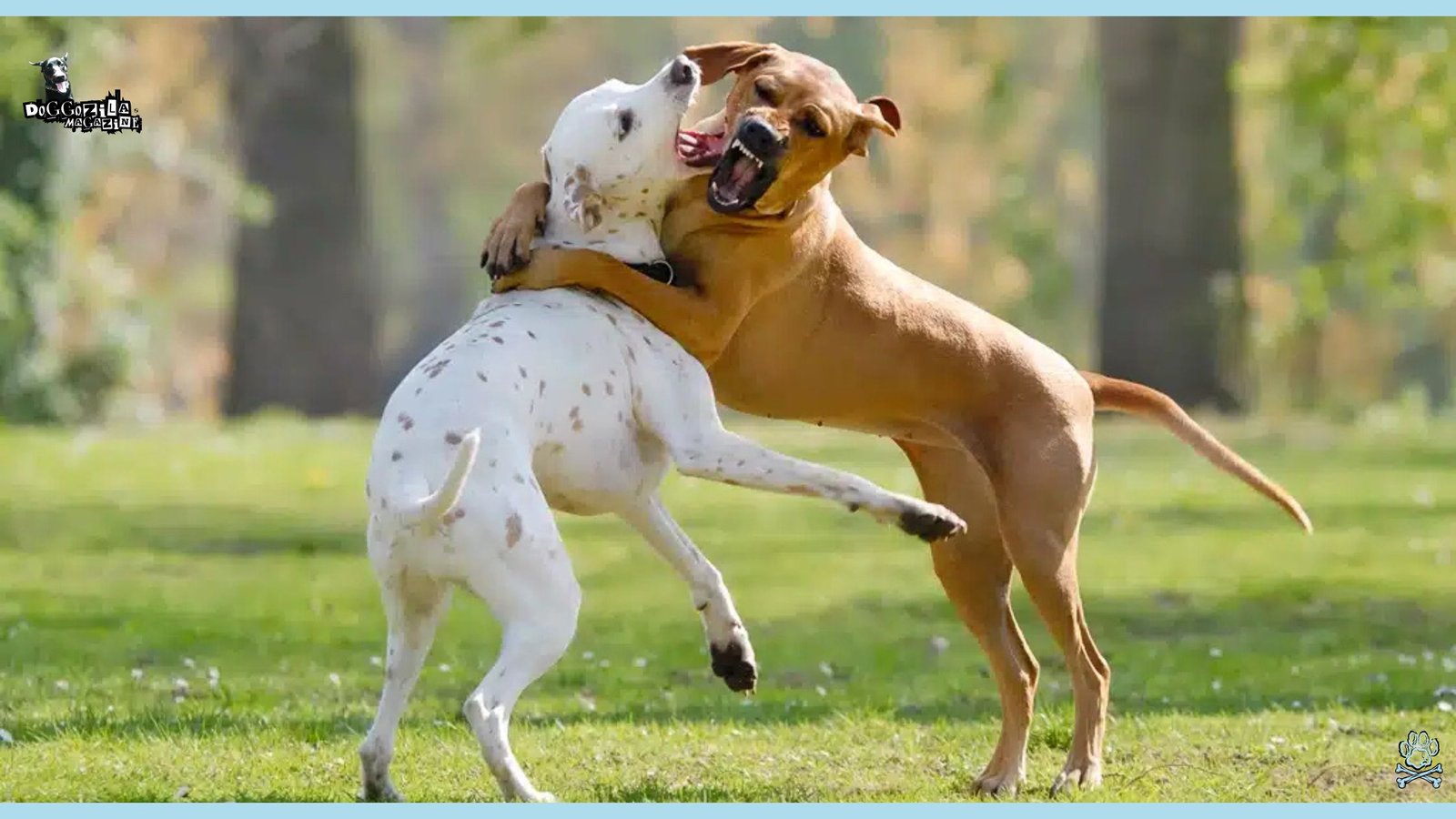
HOW TO READ YOUR DOG’S SIGNALS BEFORE IT’S TOO LATE
One of the keys to preventing conflicts between dogs is learning to read your dog’s signals early on, before a situation escalates. This means paying attention to your dog’s whole body language, not just their tail or face. A stiff posture, raised hackles, and a hard stare are all signs that a dog may be feeling uncomfortable or aggressive.
Subtle Signs Of Stress That Your Dogs Don’t Like Other Dogs
Other subtle signs of stress may include yawning, lip licking, and looking away. These behaviors are often overlooked, but they can be important indicators that a dog is not enjoying the interaction.
If you notice these early signs of discomfort, it’s important to intervene calmly and assertively. Call your dog away from the situation and give them some space to regroup.
By learning to interpret your dog’s signals and responding appropriately, you can prevent minor conflicts from turning into major fights and help your dog feel more comfortable and confident in social situations.
🔑 Key Points: Recognizing and responding to your dog’s early signs of discomfort through body language observation is key to preventing conflicts and promoting positive social interactions.
Dogs Don’t Like Misunderstandings: What Not To Assume About Interactions with Other Dogs
There is plenty of human-dog misunderstanding when it comes to interpreting canine social behavior. Many people assume that certain behaviors, such as tail wagging or mounting, always have a specific meaning.
However, these assumptions can often lead to misinterpretation and even dangerous situations. For example, a wagging tail does not always indicate a friendly dog, and mounting can be a sign of dominance or stress rather than sexual behavior.
It’s important to consider the context and the dog’s whole body language when interpreting their behavior. A dog who is wagging their tail while displaying other signs of aggression, such as a stiff posture or a hard stare, is likely not feeling friendly.
Similarly, a dog who mounts another dog during play may be trying to assert dominance or relieve stress, not necessarily trying to mate.
By avoiding common behavior misconceptions and taking the time to observe and interpret your dog’s signals accurately, you can promote safer, more positive interactions and strengthen your bond with your furry friend.
🔑 Key Points: Avoiding assumptions and misinterpretations about dog behavior by considering context and observing the whole body language is crucial for promoting safe, positive interactions between canines and their humans.
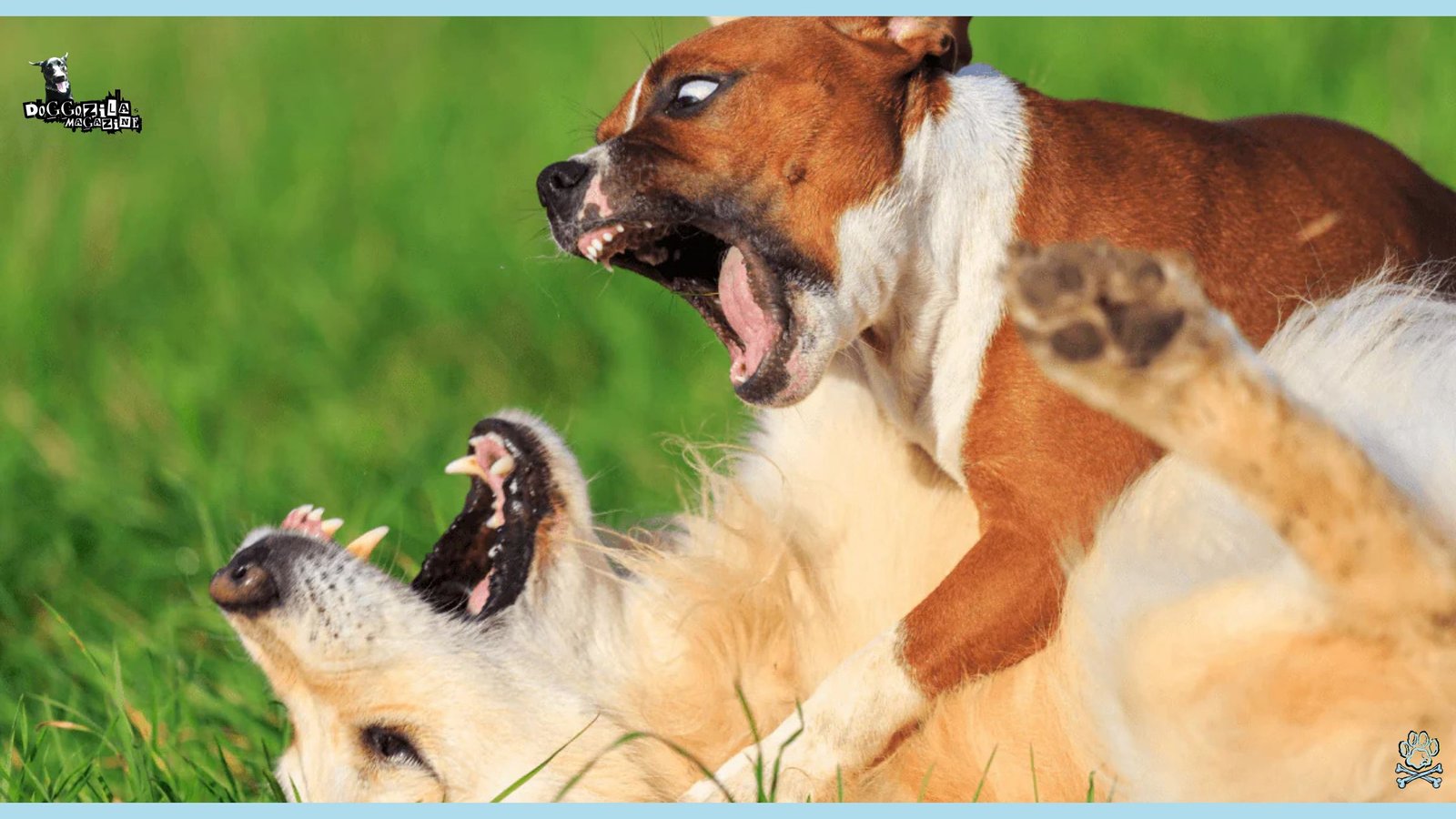
THE SCIENCE BEHIND EMOTIONS OF DOGS AND SOCIAL CUES WITH OTHER DOGS THAT THEY DON’T LIKE
Dogs are remarkable creatures with a rich emotional life and a complex system of social communication. In recent years, scientists have begun to unravel the mysteries of canine cognition and behavior, shedding light on the amazing abilities of our furry friends.
How To Interpret the Behavior of Dogs and Respond When They Don’t Like Other Dogs
Studies have shown that dogs possess a high level of emotional intelligence, with the ability to read and respond to human social cues, such as pointing and eye contact. They also have a deep capacity for empathy and can pick up on our moods and feelings.
When it comes to social interactions with other dogs, canines rely on a complex system of body language, vocalizations, and scent to communicate their intentions and emotional states.
For example, a dog who is feeling playful may display the “play bow” posture, a loose, wiggly body, and a soft, open mouth. A dog who is feeling threatened, on the other hand, may display a stiff posture, raised hackles, and a hard stare.
By understanding the science behind dog emotions and social cues, we can better interpret our dogs’ behavior and respond in ways that promote their well-being and strengthen our bond with them.
🔑 Key Points: Dogs possess a high level of emotional intelligence and rely on a complex system of body language, vocalizations, and scent to communicate their intentions and emotional states in social interactions.
Seasoned Dog Parent Vs. New Dog Owner: Perspectives on Dog Social Behavior
When it comes to interpreting and responding to dog social behavior, there can be a big difference between the approach of a seasoned dog parent and a new dog owner.
Seasoned dog parents often have a wealth of experience and knowledge to draw from when it comes to reading their dog’s signals and responding appropriately. They may be more attuned to subtle signs of discomfort or stress and quicker to intervene when necessary.
New dog owners, on the other hand, may be more prone to misinterpreting their dog’s behavior or missing important cues. They may also be more hesitant to set boundaries or intervene in social situations, for fear of doing the wrong thing.
However, both seasoned and new dog owners can benefit from seeking out expert advice and continuing to learn about canine behavior and communication.
Whether you’re a wiser dog parent or a new pup on the block, there’s always more to learn when it comes to understanding and nurturing your furry friend’s social needs.
🔑 Key Points: While seasoned dog parents may have more experience and knowledge to draw from, both new and experienced owners can benefit from seeking expert advice and continuing to learn about canine social behavior and communication.
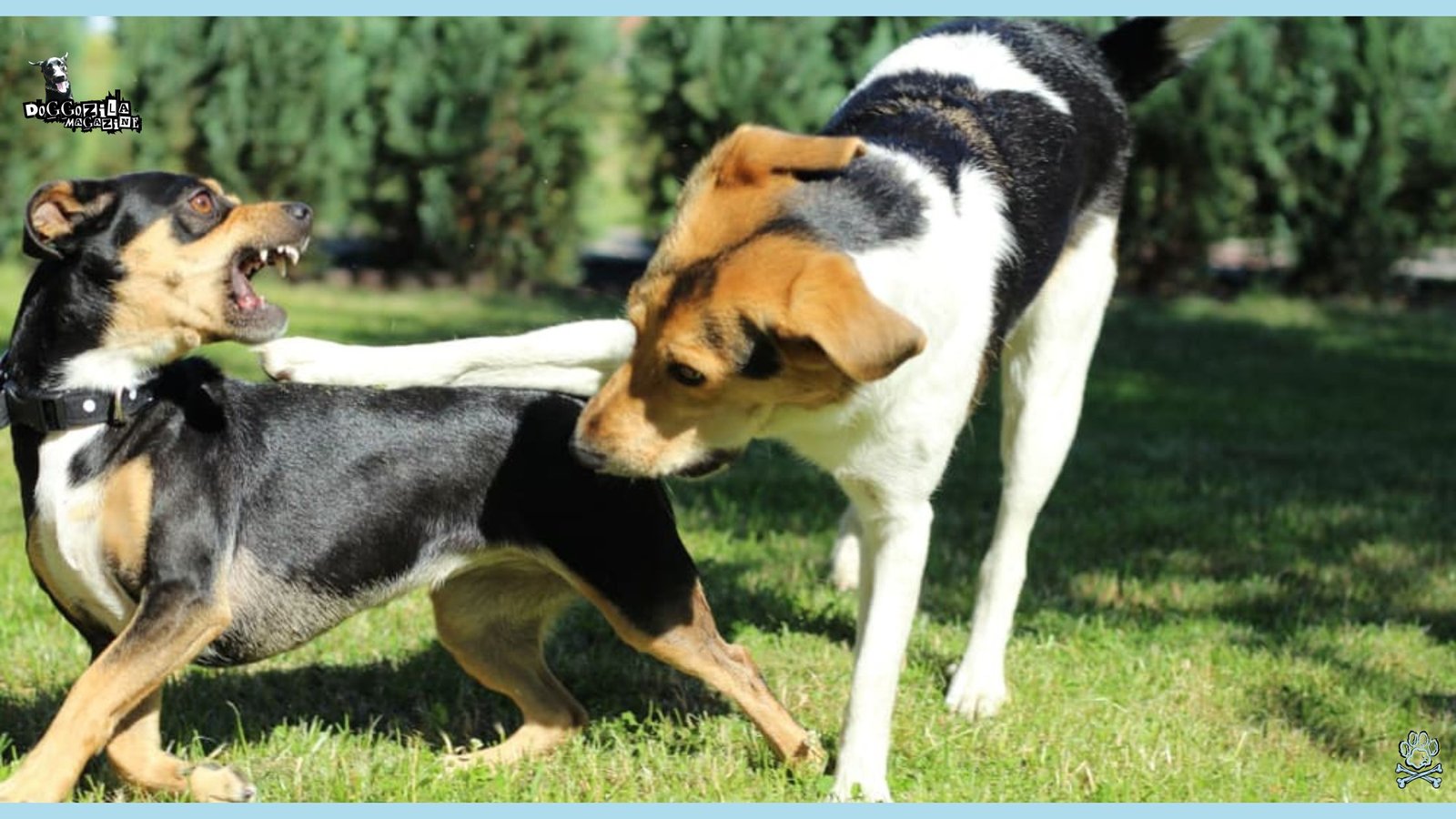
EMBRACING OUR DOGS’ SOCIAL NATURE EVEN WHEN DON’T LIKE OTHER DOGS
Dogs are social creatures by nature, with a deep need for connection and interaction with both humans and other canines. By learning to interpret their unique body language, vocalizations, and social cues, we can better understand and respond to their emotional needs and help them thrive in social situations.
Fun Fact: “The Breed Bias Myth” – While certain breeds are stereotyped as less social (like Akitas or Chow Chows), individual personality plays a bigger role. A tiny Chihuahua might be more dog-selective than a giant Great Dane—proving size and breed don’t always predict social preferences.
Nurturing Your Furry Friend’s Social Nature
Whether you’re a seasoned dog parent or a new pup owner, there’s always more to learn when it comes to nurturing your furry friend’s social nature.
By seeking out expert advice, creating safe and positive environments for socialization, and responding appropriately to your dog’s signals, you can help them build confidence, overcome fears, and develop healthy, happy relationships with both canines and humans
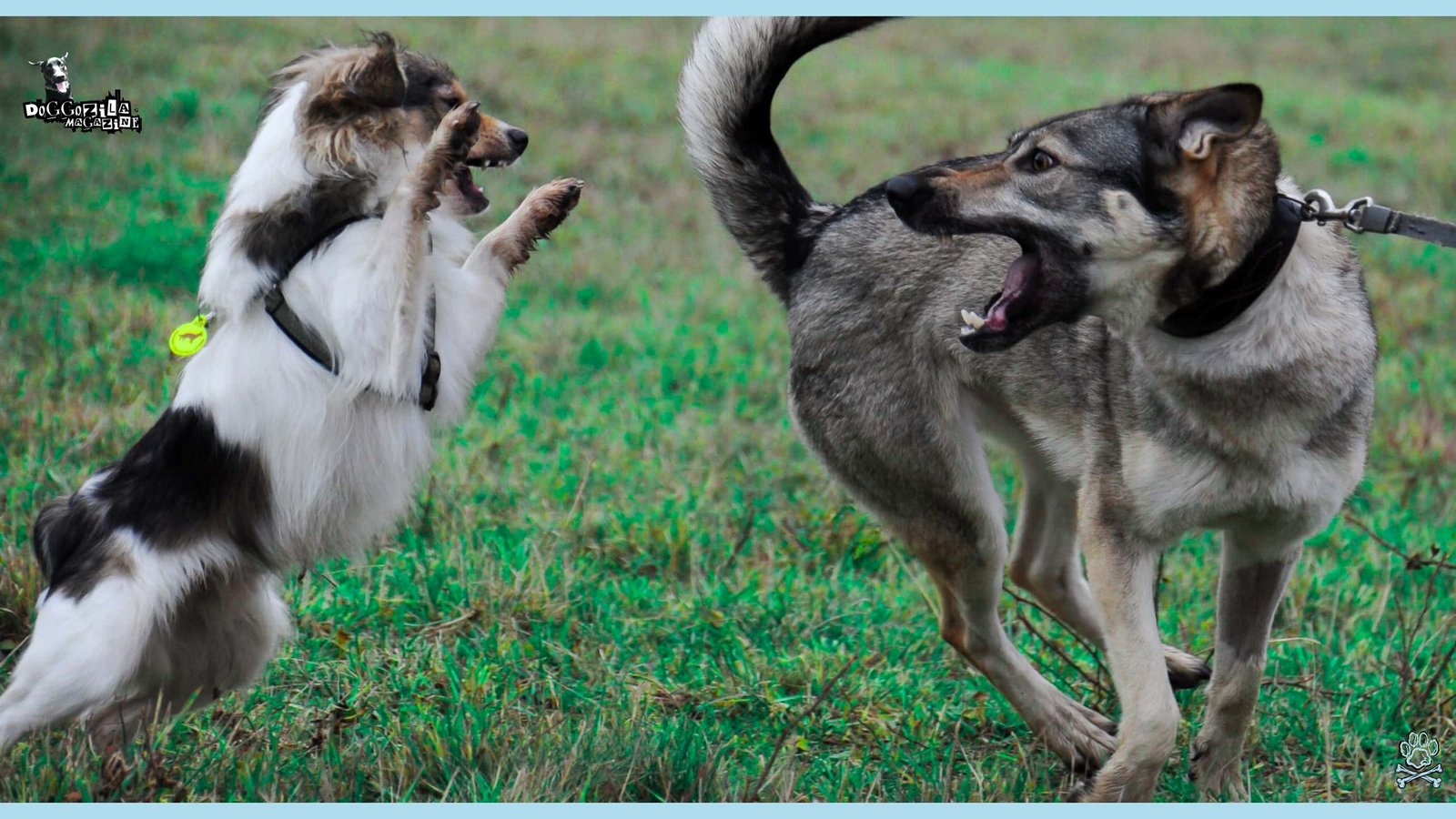
Fun Fact: “Solo Sniffers” – Some dogs who dislike other canines actually prefer human company so much that they’ll actively avoid dog parks but light up when meeting new people. These pups might even walk in wide arcs to steer clear of unfamiliar dogs on walks!
Final Thoughts About Dogs That Don’t Like Other Dogs
In a world where our canine companions speak a language all their own, understanding their social cues is key to fostering harmonious interactions. From deciphering subtle body language to recognizing the nuances of their tail wags and eye contact, we embark on a journey to decode the unspoken dialogue between dogs.
Expert insights illuminate paths to encourage positive interactions and create a safe, comfortable environment where our furry friends can flourish. As pet parents, we hold the key to cultivating strong bonds and nurturing the social nature of our beloved dogs.
By heeding the signs of discomfort, addressing fear and aggression with patience and understanding, and embracing our dogs’ individuality, we embark on a path of mutual enrichment.

So, let us embark on this adventure together, armed with knowledge and empathy, to unlock the true potential of our canine companions and create a world where tails wag with joy and hearts are full of love.

